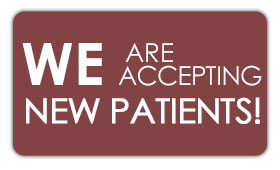Tennis elbow or lateral epicondylitis is a condition in which the outer part of the elbow becomes painful and tender often due to overuse and failed healing from repeating the same motion over and over. It often affects a specific muscle called the extensor carpi radialis brevis. This condition is common in golfers, tennis players, carpenters and other laborers who swing a hammer or tool with the forearm. Tennis players generally believe tennis elbow is caused by the repetitive nature of hitting thousands of tennis balls, which leads to tiny tears in the forearm tendon attachment at the elbow. Studies show that direct trauma to the elbow, a sudden forceful pull, or forceful extension causes more than half of these injuries. Playing tennis or golf may cause early stages of lateral epicondylitis as shock is received when hitting the ball. This shock causes micro tears to develop between the wrist extensor tendons and the bone of the humerus and some studies even show involvement of the radial nerve at the elbow. There are four stages of tennis elbow. 1.Inflammatory changes that are reversible 2.Nonreversible pathologic changes to the extensor carpi radialis brevis muscle. 3.Rupture of extensor carpi radialis brevis muscle and 4.Secondary changes such as fibrosis or calcification
Signs and symptoms of lateral epicondylitis include pain on the outer part of the elbow (lateral epicondyle), tenderness over the outer part of the elbow with applied pressure, pain with gripping, pain from activities that use the muscles that extend the wrist (e.g. pouring a container of liquid, lifting with the palm down, sweeping, especially where wrist movement is required) and morning stiffness. Symptoms associated with tennis elbow include: radiating pain from the outside of the elbow to the forearm and wrist, pain during extension of wrist, weakness of the forearm, a painful grip while shaking hands or turning a doorknob, or not being able to hold relatively heavy items in the hand.
Prevention of tennis elbow is aimed at proper technique and strengthening of the forearm muscles. Poor technique increases the chance for injury, much like any sport. The competitive level of the athlete and the number of playing years also affects the incidence of tennis elbow. Class A and B players had a significantly higher rate of tennis elbow occurrence compared to class C and novice players. 1. Decrease the amount of playing time if you are already injured or feeling pain in outside part of the elbow. 2.Stay in overall good physical shape. 3 Strengthen the muscles of the forearm, upper arm, shoulder and upper back. Increased muscular strength increases stability of joints such as the elbow. 4. Like other sports, use equipment appropriate to your ability, body size, and muscular strength.
Diagnosis of tennis elbow is often made by clinical signs and symptoms that are distinct and characteristic. With the elbow fully extended, the patient will often feel points of tenderness over the outside of the elbow. There is often pain with while the doctor flexes the patient’s wrist or has the patient resist wrist extension.
80-95% of all tennis elbow cases can be treated without surgery. Treatment of tennis elbow may include NSAIDS, bracing and icing. Corticosteroid injection may be effective in the short term, however are of little benefit after a year and caution should be taken to avoid further weakening of the tissue. Low level laser offers short-term pain relief and less disability. Moderate evidence exists demonstrating that joint manipulation directed at the elbow and wrist and spinal manipulation directed at the cervical and thoracic spinal regions results in clinical changes to pain and function in several research studies. The analgesic effect of chiropractic adjustments allow more vigorous stretching and strengthening exercises, resulting in a better and faster recovery process of the affected tendon.
Middle Tennessee Chiropractic and Sports Injury utilizes chiropractic care, nutrition and functional rehabilitation exercises to help patients conquer pain and enjoy healthier lives. If there is a particular topic you would like to hear about, please e-mail drjon@midtnchiro.com

 I grew up in Dayton, Ohio and completed my chiropractic education at Logan College of Chiropractic in St. Louis Missouri. After graduating chiropractic school I moved to Nashville. I have practiced in Nashville for 10 years and Nolensville for over 7 years. I enjoy spending time with my family, dogs, golfing, kayaking, watching college sports and being an active member of the Nolensville community and serving its health needs.
I grew up in Dayton, Ohio and completed my chiropractic education at Logan College of Chiropractic in St. Louis Missouri. After graduating chiropractic school I moved to Nashville. I have practiced in Nashville for 10 years and Nolensville for over 7 years. I enjoy spending time with my family, dogs, golfing, kayaking, watching college sports and being an active member of the Nolensville community and serving its health needs.